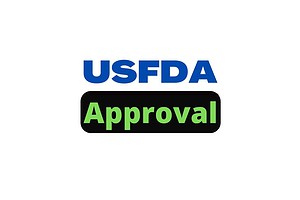Last Updated on February 5, 2024 by The Health Master
Prescriptions
In a recent development following a directive from the Orissa High Court, the chief secretary of the state issued a circular urging all doctors to write prescriptions and postmortem reports in legible capital letters or typed forms.
This initiative aims to address the court’s concern about the difficulty in comprehending medical reports due to the prevalent zigzag style of writing among doctors.
Orissa High Court
Overview of the directive from the Orissa High Court
The Orissa High Court, recognizing the challenges faced in understanding medical documents, has called for a significant change in the way doctors present their prescriptions and reports.
The directive emphasizes the importance of legibility for effective judicial appreciation of evidence.
Importance of legible prescriptions
The ability of judicial officers to read and understand prescriptions and medical reports is crucial for reaching informed conclusions.
Illegible handwriting has been identified as a major hindrance, leading to the recent circular urging doctors to adopt a more readable style.
Background of the Issue
Zigzag style of writing by doctors
The court, in its judgment, highlighted the prevalent zigzag style of writing by doctors, asserting that it impedes the comprehension of medical reports and prescriptions.
This observation prompted the chief secretary to take proactive measures to rectify the situation.
Difficulty in reading prescriptions
The court expressed its difficulty in reading prescriptions, medico-legal reports, and postmortem reports, emphasizing the adverse impact on the state’s judicial system.
This challenge led to the issuance of a circular to address the issue comprehensively.
Circular issued by the chief secretary
In response to the court’s concerns, the chief secretary issued a circular on January 11, 2024, directing all registered medical practitioners, medical officers of government hospitals, peripheral healthcare facilities, medical college hospitals, private medical colleges, and private clinics to write prescriptions and medical reports in legible handwriting or typed forms.
Circular Details
Circular issued on January 11, 2024
The circular outlines the necessity of clear and legible writing in medical documents for the effective functioning of the judicial system.
It cites the guidelines of the National Medical Commission (NMC) dated 23.5.2022, urging medical professionals to adhere to these guidelines in their documentation.
Guidelines from the NMC
The circular emphasizes the importance of following the guidelines provided by the National Medical Commission (NMC), aligning the state’s medical practitioners with national standards.
This move aims to ensure uniformity and clarity in medical documentation.
Criticism of the zigzag handwriting trend among doctors in Odisha
The circular criticizes the tendency among doctors in Odisha to adopt a zigzag way of handwriting, noting that it has become a fashion among the medical community.
The government, in collaboration with the judiciary, seeks a departure from this trend for the benefit of all stakeholders.
Impact on Judicial System
Court’s struggle in comprehending medical reports
The recent judgment by the court highlights the struggles faced by the judicial system in comprehending medical reports.
The illegibility of prescriptions and reports impedes the court’s ability to reach definitive conclusions based on the evidence presented.
Need for a change in the casual approach
Acknowledging the challenges faced by the judiciary, the court called for a change in the casual approach of doctors towards report writing.
The circular issued by the chief secretary serves as a formal directive to implement this change.
Emphasis on adherence to guidelines
To standardize and improve the quality of medical documentation, the circular reiterates the importance of adhering to the guidelines of the erstwhile Medical Council of India and the present National Medical Commission.
This emphasis aims to establish a common standard for all medical practitioners.
Challenges Faced by Doctors
Time-consuming nature of writing in capital letters
While appreciating the services of doctors, especially during the Covid period, the court acknowledges the time-consuming nature of writing in capital letters.
The circular addresses this concern and encourages doctors to prioritize legibility without compromising on efficiency.
Balancing the demands of legibility and time efficiency
Doctors face a significant challenge in balancing the need for clear communication with the time constraints of their profession.
The circular aims to strike a balance that ensures both legibility and time efficiency in medical documentation.
Court’s acknowledgment
In recognizing the commendable services provided by doctors during the Covid period, the court urges a mindset change in prescription writing.
The emphasis is on adopting practices that enhance readability without excessively burdening doctors.
Mindset Change in Prescription Writing
Call for doctors to change their approach
The circular calls for a fundamental mindset change among doctors in prescription writing.
It emphasizes the importance of adopting a more reader-friendly style that facilitates better understanding by both the common man and judicial officers.
Encouraging doctors to adopt a readable style
While acknowledging the challenges faced by doctors, the circular encourages them to adopt a readable style that ensures effective communication.
This change is seen as essential for the overall improvement of the healthcare system and the judiciary.
Addressing the fashion of zigzag handwriting
The circular explicitly addresses the trend of zigzag handwriting, categorizing it as a fashion among doctors in Odisha.
The government aims to discourage this trend and promote a more professional and standardized approach to documentation.
Implementation of Circular
Circular enforcement on January 11, 2024
The circular, issued on January 11, 2024, is now in force, and all medical practitioners are expected to comply with its directives.
The effective implementation of the circular is crucial for improving the readability of medical documents and enhancing the judicial process.
Expectations from Doctors
The circular extends its directives to all segments of the medical community, doctors, including registered medical practitioners, government medical officers, and private clinics.
Compliance with the circular is seen as a collective responsibility to address the challenges faced by the judicial system.
Importance of following the circular
The successful implementation of the circular is vital for the overall improvement of the judicial system.
By following the guidelines, medical practitioners contribute to the efficiency and effectiveness of the judicial process, ensuring that evidence is presented in a clear and understandable manner.
Balancing Act for Doctors
Balancing time constraints and the need for clear communication
Doctors face a delicate balancing act between the time constraints imposed by their profession and the imperative for clear communication.
The circular recognizes this challenge and encourages doctors to find a middle ground that prioritizes legibility without compromising on their valuable time.
Discussion on the trade-off between time spent writing and readability
The article delves into the trade-off that doctors often face between the time spent writing in capital letters and the readability of their documents.
It explores potential solutions and emphasizes the importance of cooperation from the medical community to overcome these challenges.
Importance of cooperation from the medical community
The success of the circular relies on the cooperation of the entire medical community.
By working collectively to implement the recommended changes, doctors can contribute to the improvement of the healthcare system and facilitate a more seamless judicial process.
Disclaimer: This article contains information derived from the source mentioned below. Our team utilized an AI language model to rewrite and present the news or article in a unique format.
FAQs
- Q: Why is the court emphasizing the need for doctors to write prescriptions in legible handwriting or typed forms?
- A: The court recognizes the difficulty in comprehending medical reports due to the prevalent zigzag style of writing by doctors, impacting the judicial system’s ability to reach conclusive decisions.
- Q: What guidelines are doctors expected to follow according to the circular?
- A: The circular directs doctors to follow the guidelines of the National Medical Commission (NMC) dated 23.5.2022, emphasizing the importance of clear and legible writing in medical documents.
- Q: How does the circular address the time constraints faced by doctors in writing prescriptions?
- A: While acknowledging the time-consuming nature of writing in capital letters, the circular encourages doctors to prioritize legibility without compromising on efficiency, recognizing their valuable time.
- Q: Is the circular only applicable to government hospitals, or does it include private clinics as well?
- A: The circular extends its directives to all segments of the medical community, including registered medical practitioners, government medical officers, and private clinics. It is a collective responsibility.
- Q: How can doctors contribute to the improvement of the judicial system by following the circular?
- A: By adhering to the guidelines outlined in the circular, doctors contribute to the overall efficiency and effectiveness of the judicial process. Clear and legible medical documents aid in better understanding and appreciation of evidence.
Innovative Solutions: Transforming Leprosy Treatment for Lasting Impact
Prescribing Antimicrobials: A Vital Call for Precision in Medical Practice
New class of antibiotics developed to fight drug-resistant bacteria
Good Hygienic Practices: A Comprehensive Guide to Ensuring Food Safety
Drug recall: Various Eye drops recalled due to this reason
10 Facts about USFDA Approval of Drug
Innovative Solutions: Transforming Leprosy Treatment for Lasting Impact
USFDA approval granted for generic Pregabalin Capsules: Strides
How to Become a Skilled Manufacturing Chemist in the Pharma Industry
FSSAI: Food Labelling and Display – Chapter-1
USFDA approval granted for Generic Gabapentin Tablets
Venus Remedies gets GMP certificate from Libya: A Gateway to African Markets
Top 10 Blockbuster Drugs Going Generic in 2024
Drug alert: 78 out of 1008 samples declared as NSQ in December 2023
For informative videos by The Health Master, click on the below YouTube icon:
For informative videos on Medical Store / Pharmacy, click on the below YouTube icon:
For informative videos on the news regarding Pharma / Medical Devices / Cosmetics / Homoeopathy etc., click on the below YouTube icon:
For informative videos on consumer awareness, click on the below YouTube icon:











